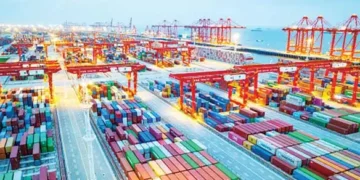ON a humid summer evening in Delhi, a street vendor selling chaat, taps a small soundbox after receiving payment. Within seconds, a voice announces that twenty rupees have been credited to his account. There is no exchange of coins, no fumbling for change. For the customer, it’s a quick tap of a mobile screen. For the vendor, it’s reassurance that money has reached his bank. This ordinary scene has become so ubiquitous in India that it barely raises eyebrows. World over, subject matter experts, including economists at the International Monetary Fund, are studying UPI’s success story.
IMF admiration
In June 2025, the IMF released a Fintech Note. Buried in its pages was a remarkable recognition: India’s Unified Payments Interface (UPI), the instant payment system launched in 2016, has “transformed the digital payments landscape in India” and offers lessons to the world.
The IMF’s admiration did not stop there. In its September 2025 issue of Finance & Development, the organisation carried a feature article that described how UPI has “transformed India’s payment landscape and become the largest real-time payment system in the world by volume, processing more than 19 billion transactions every month.”
The story of UPI did not begin with an app, but with an idea. How could India, a country of more than a billion people, leapfrog traditional banking and move straight into the digital era? The answer lay in what policymakers later called ‘Digital Public Infrastructure’ – a trinity of reforms: Jan Dhan Yojana, Aadhaar, and low-cost mobile data. .
Staggering scale
When the National Payments Corporation of India (NPCI) launched UPI in 2016, it built on this foundation. Unlike closed wallets, UPI was designed to be interoperable. From Rs 20 chai payments to trillion-rupee flows, UPI’s receives global appreciation. The scale of UPI’s rise is staggering. In August 2025, the system processed more than 20 billion transactions worth over Rs 24.85 Lakh Crore. Further strengthening this growth trajectory, the National Payments Corporation of India has revised the UPI transaction limit for Person-to-Merchant (P2M) payments. The IMF’s report reinforces a sentiment widely shared across India that UPI is not merely a tool of convenience, but an instrument of empowerment.
What began as an Indian innovation is today crossing borders through partnerships led by NPCI International Payments Limited (NIPL). In Singapore, UPI has been linked with PayNow; in the UAE and Mauritius, Indian travellers can pay for goods and services using UPI; in France, Indian tourists can now pay at the Eiffel Tower by simply scanning a QR code and settling the bill in rupees. Nepal and Bhutan have already adopted UPI and talks are ongoing with central banks and fintechs across Asia, Africa, and Europe.
Trust digitised
This is a quiet but profound transformation. For decades, global finance was defined by Western institutions and card networks. Now, an Indian-built public digital platform is being showcased as an export. UPI is not just carrying money across borders; it is carrying India’s reputation for innovation,
inclusion, and scale. The Delhi street vendor who listens to his soundbox may not be aware about the recognition UPI has received from the world and development institutions like the IMF. But his daily experience – quick, secure, and cashless transactions – is precisely what caught the world’s attention. In him, and millions like him, lies the story of how India digitised trust itself.
UPI today is more than a payment interface. It is the face of India’s innovation, the embodiment of its inclusive growth, and now, a beacon for nations seeking to leap from cash to digital. UPI has become not just India’s success story, but a global symbol of possibility. From cash to clicks, India’s digital rails are carrying the country onto the world stage – and the world is listening.































